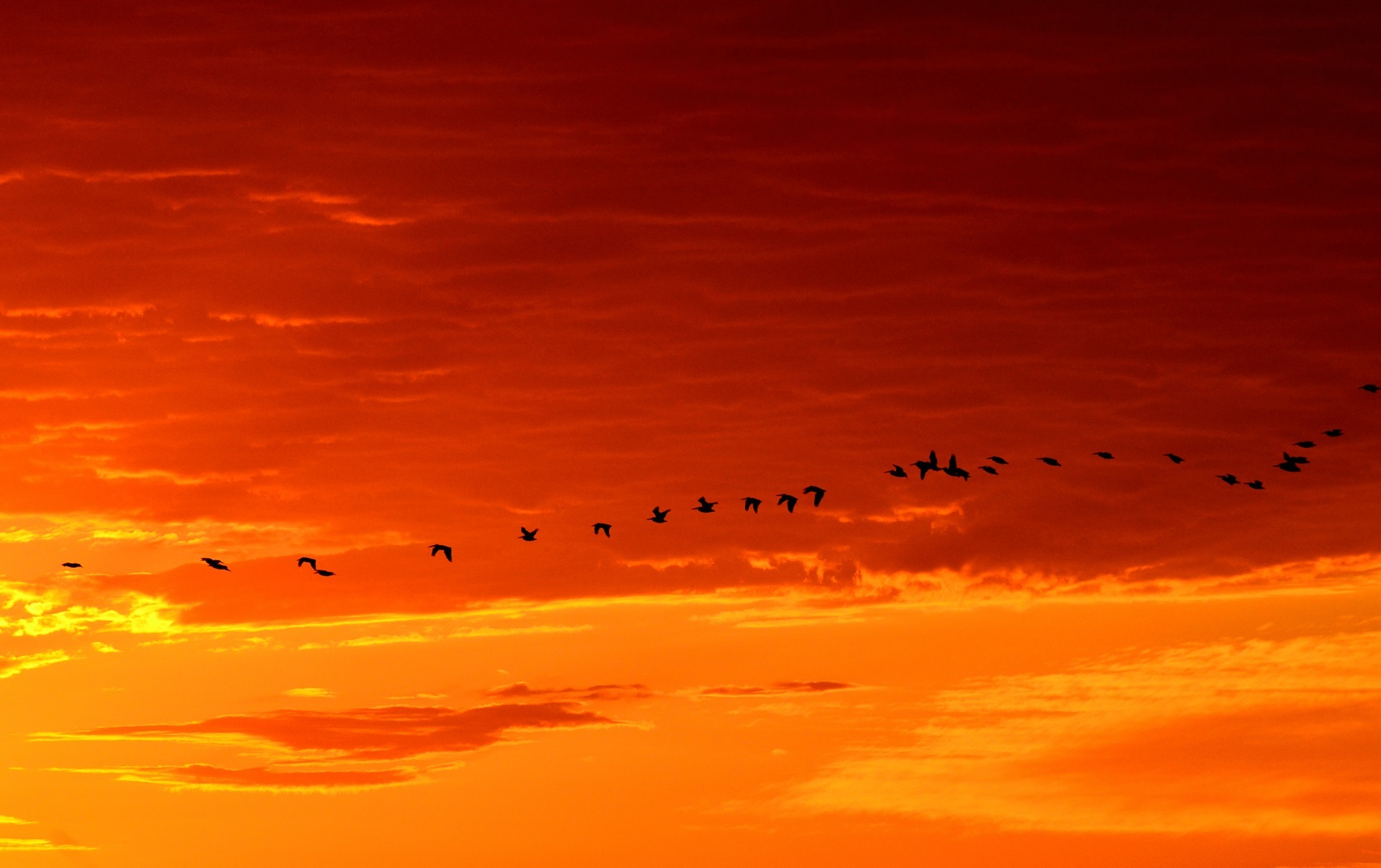Last fall was one that Big Bear locals will remember for a long time. We watched as the Line Fire burned right up to the edge of Big Bear Valley, threatening lives and structures along the way. Thankfully, the wildfire was contained with no fatalities and minimal property damage. But unfortunately, our forest wasn’t so lucky.
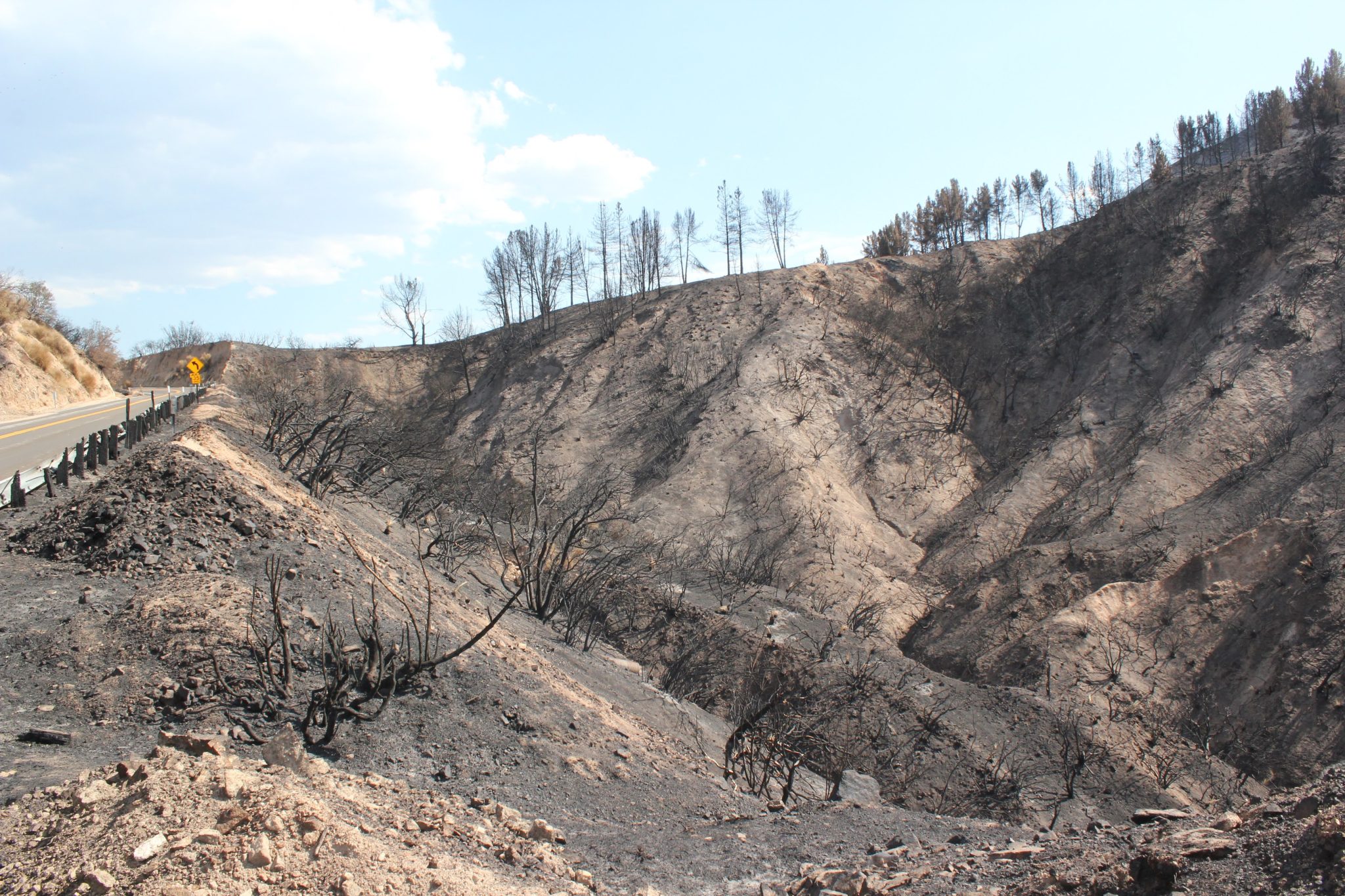
Devastation from the Line Fire in the Big Bear Valley. Photo courtesy of KBHR.
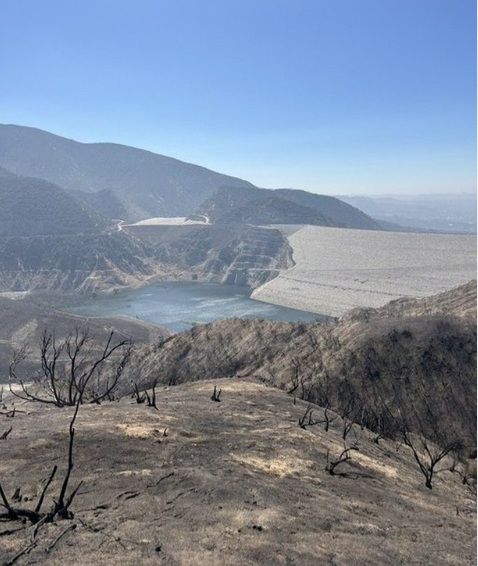
The Line Fire aftermath, near Seven Oaks Dam.
As the last embers were extinguished in December, the Line Fire’s toll would reveal a heartbreaking 43,978 acres—nearly 70 square miles—of the San Bernardino National Forest, gone. What was once a verdant wilderness is now a moonscape that will take years to regenerate. In the meantime, local birds are fighting for fewer resources, from places to roost and nest to finding food for themselves and their young.
A Sobering Bird Report and a Call for Personal Action
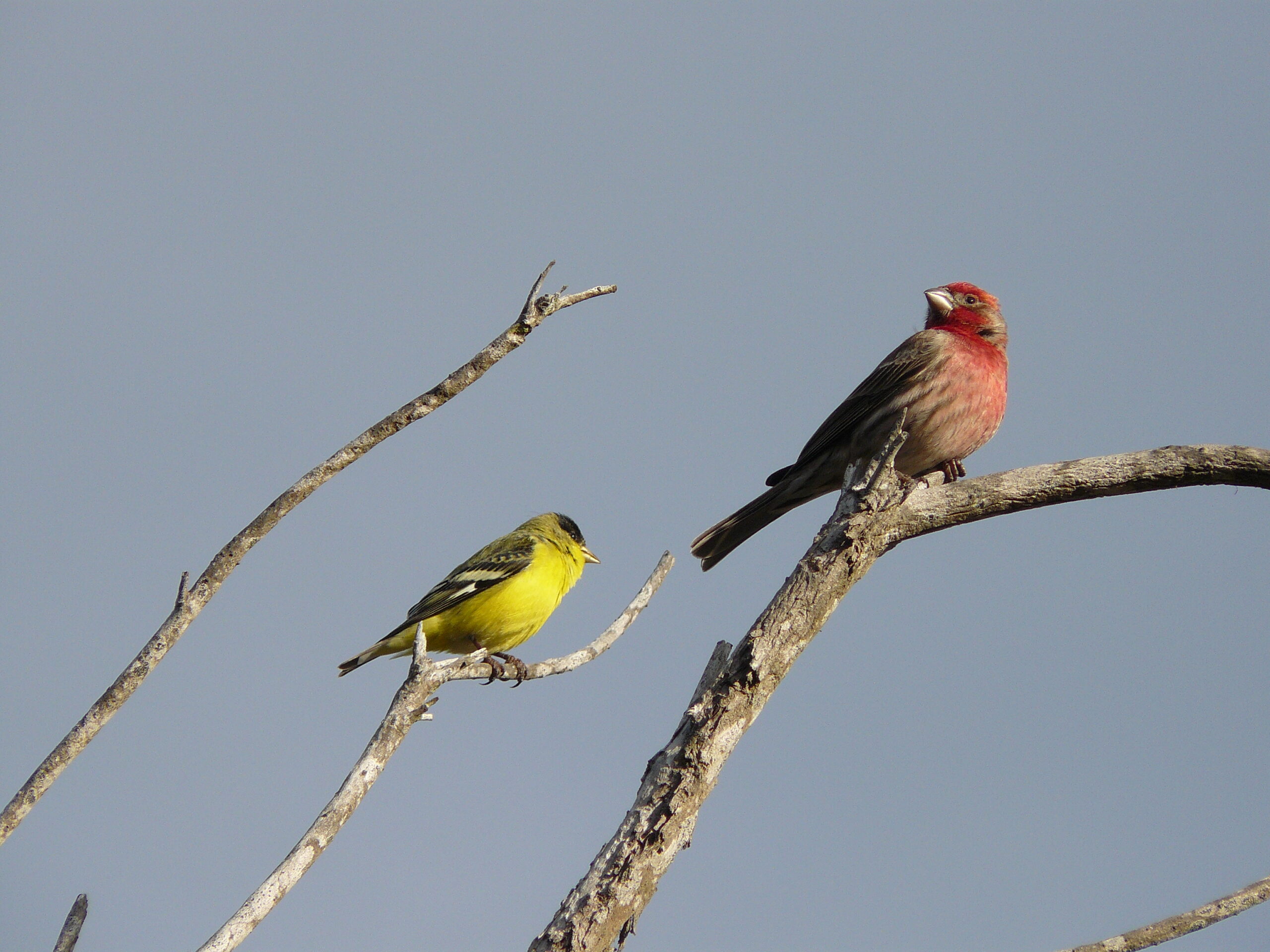
Recently, the 2025 edition of the State of the Birds report was released, and it wasn’t good news. Remember the “3 billion bird loss in 30 years” statistic that devastated us back in 2019? Well, those numbers continue to rise as bird populations plummet. Across the board, the birds of North America are losing numbers at a rapid rate. That’s the bad news. What’s the good? We can help.
While conservation efforts are making some headway, people are looking to take action on a more personal level to help those birds they see at their feeders, on their nature walks, and out in the neighborhood.
After The Fire: Make a Real, Local Impact—How?
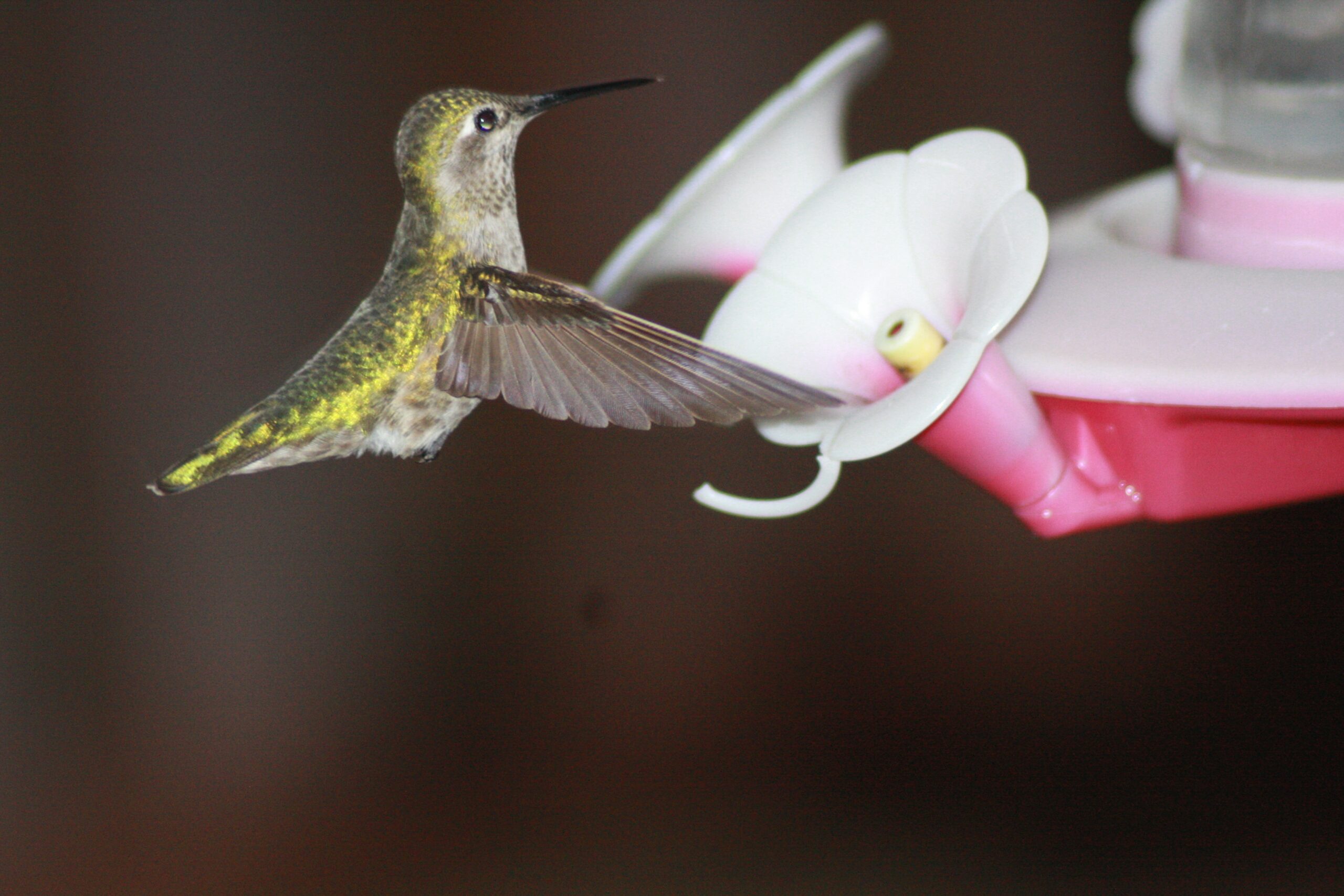
Have you noticed new birds at your feeders—ones you’ve never seen before? Or perhaps you struggle to keep your feeders full because so many birds are feeding. You’re seeing the impact of the fire, as our local birds look to supplement food they would normally find in the forest.
Now’s the time to make a direct impact locally to support our ecosystem. Give the birds what they need by putting out more bird feeders, offering different types of bird food (from seeds to nuts and berries to nectar for hummingbirds), and providing more water sources like birdbaths and fountains.
Speaking of hummingbirds, these scrappy little fliers are a bit more vulnerable to the effect of wildfires than other wild birds. While it’s true that some hummingbirds can fly hundreds of miles non-stop—longer distances than most birds—they are also unique from other birds in that they can’t walk or hop. During a fire, this means that if they can’t fly from a burn zone, they can’t escape it like other birds can. But even after a fire is contained, they are also more vulnerable because of their unique energy needs. With lightning-fast metabolism, hummers must eat up to half of their body weight daily to maintain their busy lifestyles. So, the impact of wildfire on hummingbirds means less natural food sources for them, competing with other birds and wildlife for what’s left, and an internal clock that makes it vital for them to find food fast. Still think your hummingbird feeders don’t make much of a difference?
Another way people are taking action to provide immediate help to the birds in our area is by creating a bird sanctuary in their backyard or outdoor space. For some, it’s as simple (yet still effective) as mounting a nest box, hanging a bird feeder, and calling it a day. Others may take it a step further and plan for the future, planting native, bird-friendly plants that will, in time, act as bird habitats, or as sheltered spaces where they can enjoy respite from the weather. Still others take it a step further and create a Certified Wildlife Habitat, where birds, bees, butterflies, and other wildlife thrive.
To learn more, read our blog post “How to Turn Your Garden or Yard into a Certified Wildlife Habitat.”
“What More Can I Do to Help Birds After a Fire?”
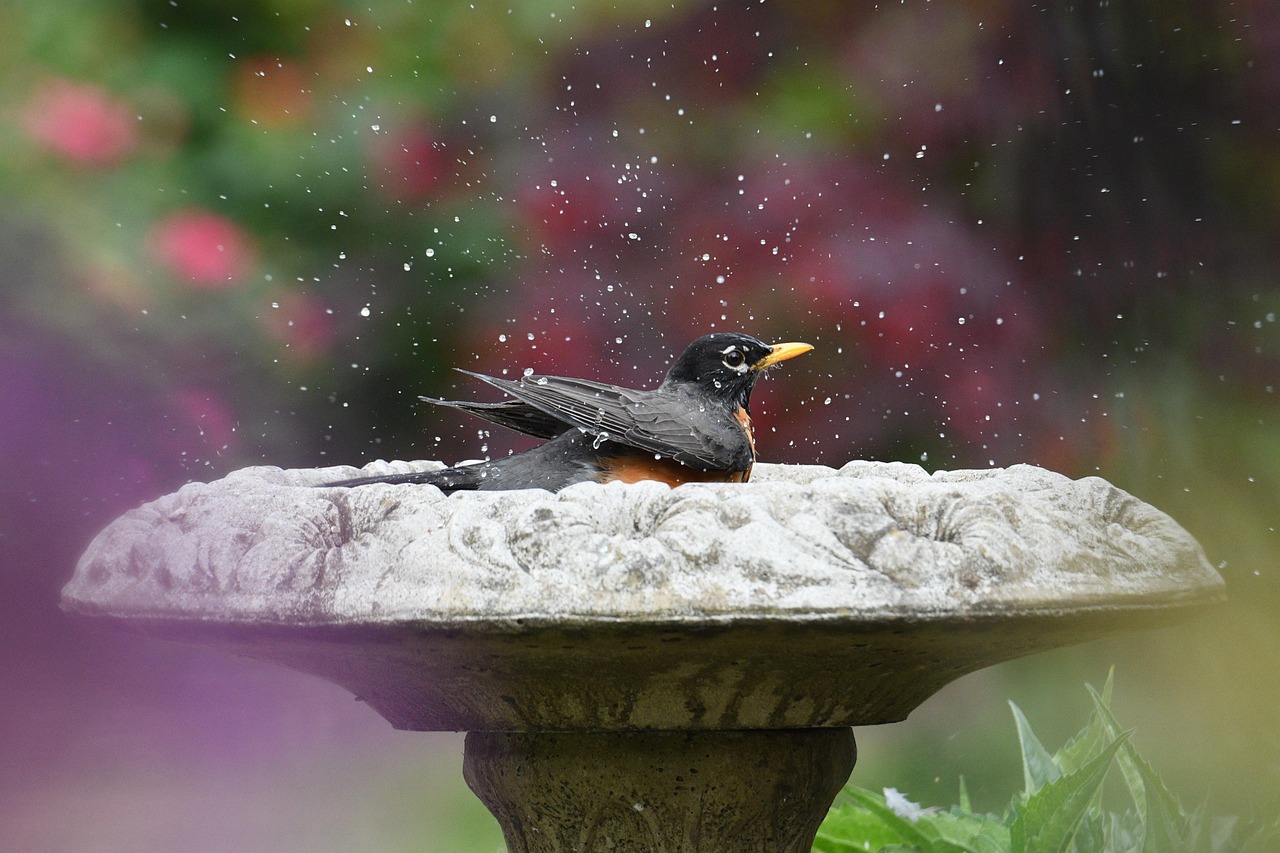
What if, like many of us, you’re already feeding the birds, planting native plants, and using only organic gardening methods? First off, you’re doing an excellent job! These everyday practices add up and are appreciated by the birds who have been affected, and are still recovering, from the trauma of the fire.
Can you feed more birds?
Can you add another bird feeder with a different kind of food to your yard, so that you can feed more kinds of birds in your area? For instance, adding a hummingbird feeder and/or suet feeder to your yard, along with your tube feeder? (With multiple bird feeders in one space, it’s best to hang or mount them far enough away from each other so that birds can feed in peace.)
Can you plant one new native plant?
Don’t have a ton of space? Even just one new native shrub or plant in a pot can serve as a refuge for wild birds.
Can you make your birdbath more inviting?
Give your birdbath a deep clean, add fresh water, and keep it shallow (and maybe add a few sticks and/or rocks for perches), and the birds will love it.
For more birdbath tips, read “6 Reasons Birds Aren’t Visiting Your Birdbath.”
Read Up on How to Help Wild Birds
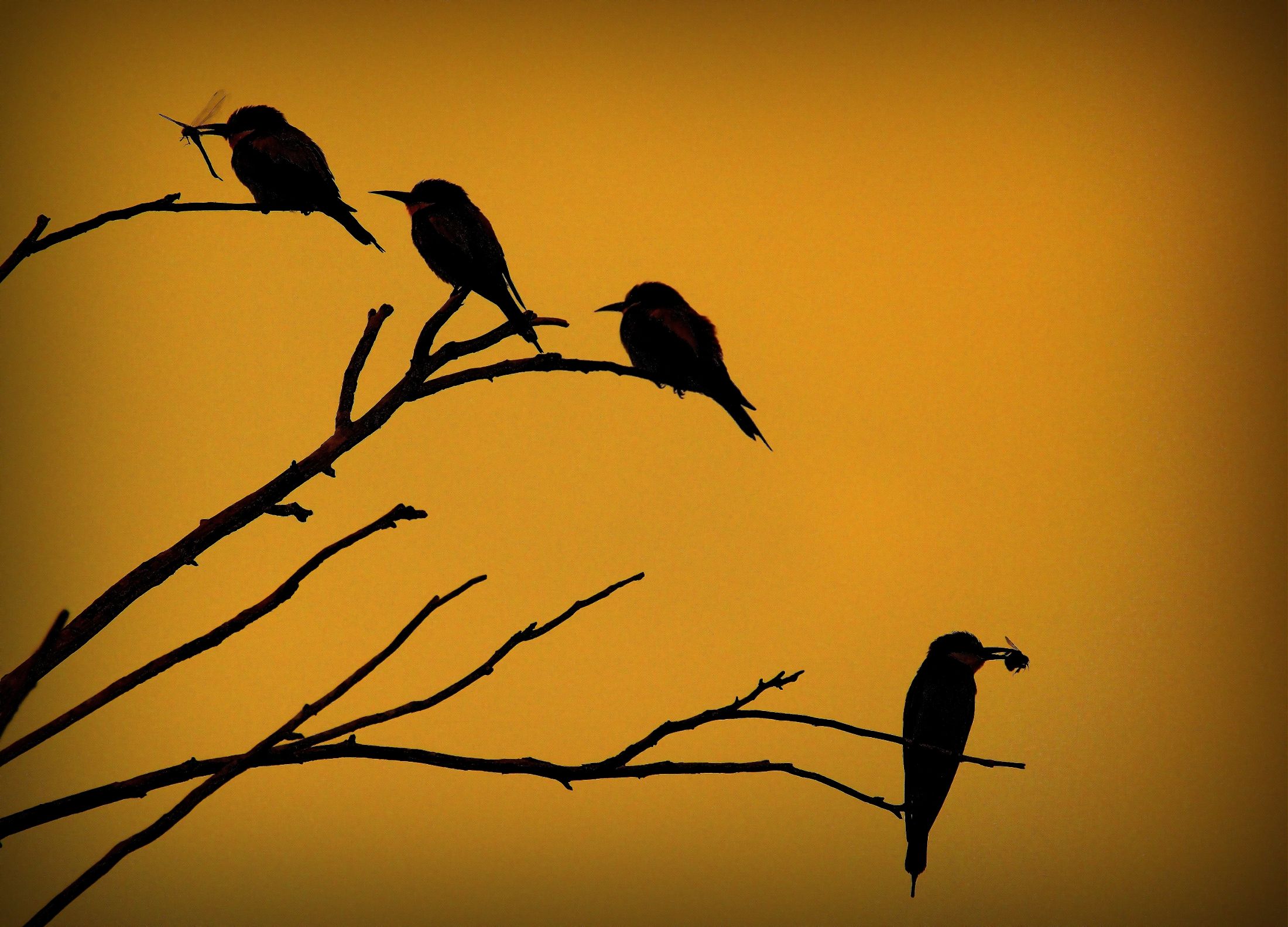
- How You Can Help the Declining Bird Population
- How to Help Birds Survive Wildfires: FAQs and Tips
- How Climate Change Affects Wild Birds (and What We Can Do)
- Bird Conservation Organizations We Love
- Regenerative Wild Bird Habitats: Why Needed and How to Help
- How to Plant a Hummingbird Garden
Line Fire aftermath photo courtesy of USDA Forest Service/Connor Renard.

